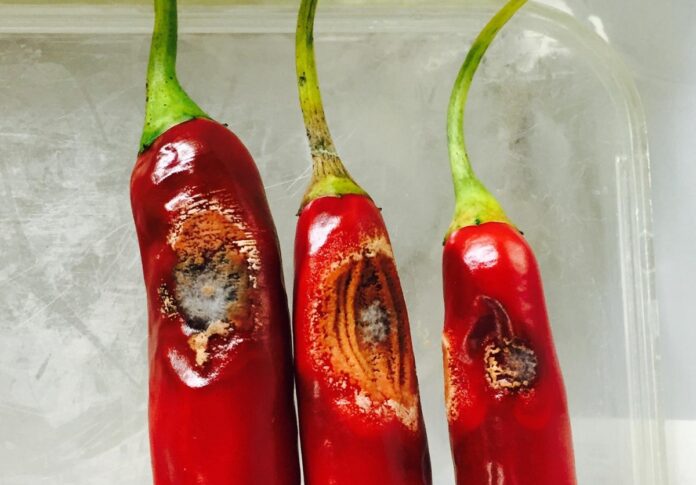- Advertisement -
Anthracnose on pepper (Colletotrichum acutatum)
Prevention
- When planting use certified seed or disease-free seedlings.
- The seeds can be treated to reduce the chance of disease by soaking in hot water (50°C) for 30 minutes before planting.
- If the disease is present in the field, pepper should be rotated with crops other than tomatoes, eggplants or potatoes for at least three years.
- If irrigation is used only water in the morning so the plant can dry before nightfall.
Read also: How to manage pests: Pod borer of Cowpea
Monitoring
- Scout the field once a week checking for symptoms on the leaves and fruits.
- Symptoms on the fruits appear as circular dark sunken lesions with concentric rings on the immature and mature fruit.
- Lesions can also be seen on the stems and leaves as irregularly shaped brown spots with dark edges.
- Consider carrying out early control when more than one lesion is seen on any individual plant.
Direct Control
- Remove any diseased plants and fruits from the field and either bury or burn them.
- When using a pesticide or botanical, always wear protective clothing and follow the instructions on the product label.
- Do not use chemicals with the same mode of action year after year as this can lead to resistance.
- Always consult the most recent list of registered pesticides.
- Apply Mancozeb (Ivory 80WP, Foko 80% WP or FokoSuper 80% WP) as a protectant fungicide at a rate of 100-150g per 16-litre knapsack sprayer Protectant fungicide with a multi-site mode of action (FRAC group M3)
Read also: Safety Precautions in Agrochemicals handling and usage
Restriction
- WHO Class III (Slightly hazardous)
Timing: apply when the plants start to flower or when conditions are favourable for the disease (wet and warm). Spray maximum of 3 times per season PHI: A pre-harvest interval of 14 days should be observed. REI: Avoid entry into the field 2 days after application.
- Advertisement -


